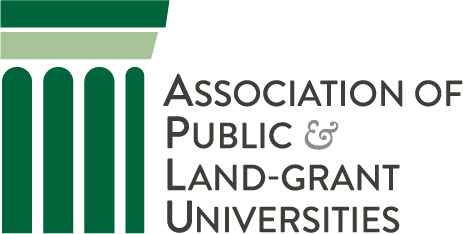Colleges and universities working to reduce barriers to equity for minoritized and poverty-affected students must consider not only the curriculum and classroom practices but also how the syllabus can create barriers.
That was the subject of “Equitizing Your Syllabi,” the first in a series of Disciplinary Communities of Practice webinars offered in October by the Online Learning Consortium, the Association of Public & Land-grant Universities, and Achieving the Dream in partnership with Every Learner Everywhere.
The Communities of Practice initiative brings together faculty and instructional staff in writing, math, biology, and chemistry to collaborate with like-minded peers across institutions. They identify, share, and develop discipline-specific teaching and learning strategies, with a focus on effective and equitable digital learning and teaching with technology.
The theme for Fall 2021 is Getting to Know Our Students: Increasing Engagement In Digital Learning Environments. Megan Tesene, director for the APLU’s Personalized Learning Consortium, said the goal of the webinar series is to “inhabit a digital learning space that promotes equity and inclusion in our disciplines and . . . invites interaction, collaboration, and belonging.”
That starts with infusing equity into the syllabus — adapting it to the needs and experiences of Black, Latino, Indigenous, poverty-affected, and first-generation students. Ruanda Garth-McCullough, Director of Program Development at Achieving the Dream, said, “As faculty, we often remix and revise the syllabus we’re handed; we don’t . . . make sure it’s geared toward its intended audience [students] instead of the institution or the faculty member.”
To this end, colleagues from Achieving the Dream outlined and presented for discussion ways to equitize the syllabus, framed by six equity-minded principles developed at the University of Southern California’s Center for Urban Education
1. Welcoming
From the beginning, create a supportive classroom culture that makes students feel valued and cared for. That starts with language and tone.
Rather than launch the syllabus with an intimidating list of course requirements, convey sensitivity to students’ entering skill levels. Clarify that, while aspects of the class can be challenging, it’s perfectly acceptable — even beneficial — for a student to seek extra help.
For example, one developmental math instructor at Gateway Community College In Connecticut opened with this welcome message: “I want you to succeed in this course. We all learn differently because we build knowledge differently. You are not in this alone, reach out to me or your classmates for support! You got this!”
Establish respect and inclusion as class norms. Set ground rules for collegial class discussion and a policy against racism, sexism, homophobia, transphobia, religious bigotry, or any other form of bias.
Related reading: Caring for Students Playbook
2. Representing
Design a syllabus that embraces every racial and ethnic background and experience, whether in assignments, readings, or other classwork.
Feature activities and assignments that are culturally relevant and inclusive, offering students the opportunity to draw on experience and knowledge from their own communities. Perhaps ask students to investigate real-world problems and issues affecting the cities, towns, or neighborhoods from which they come.
Related reading: How This Chemistry Instructor Uses Climate Justice to Connect Science With Personal Experience
3. Validating students
An inclusive syllabus communicates the belief that all students not only have the ability to be successful but that they are expected to succeed. Offer assignments and assessments that give students multiple ways of demonstrating their learning and strengths.
In the syllabus for his calculus course, James Gray, mathematics professor at the Community College of Aurora, kicks off with an entry headed “Class Culture.” The class, Gray writes, “is predicated on the belief that everyone has the ability to learn calculus. How we act as individuals and as a class will be the key to accomplishing our goals successfully.” He identifies and discusses four core principles:
- “Treat our time with respect”
- “Approach your classmates with kindness and encouragement”
- “Struggle productively”
- “Learning is a process”
4. Demystify college policies and practices
Provide students with basic, essential information needed to complete the course and navigate the college.
In plain language, communicate course descriptions, grading schemes, instructor office hours and avenues of support, both from the instructor and around campus. Steer clear of academic jargon or a dense, wordy layout. Strive for user-friendly clarity.
Related reading: 4 Alternative Syllabus Formats That Promote Equity
5. Create a partnership
Above all, convey respect for students as autonomous, critical, and reflective learners.
“You’ve probably heard of the banking model of education,” said Sarah Kinnison, program director for Achieving the Dream. “An instructor kind of fills a student’s head with information. That’s not what anyone here is going for.”
Instead, establish a learning partnership. Set expectations from the beginning that communicate what you expect from students and what they can expect from you as their instructor. Articulate a willingness to accept feedback from students and the flexibility to use a variety of approaches to foster learning.
6. Deconstructing the presentation of white students as the “norm.”
Inspire students to question racialized norms and structural inequalities in social institutions such as education, health, and law.
“This is probably the hardest but also most important principle to address,” Garth-McCullough said. “When you look at our standard syllabi, there’s so much messaging that is not inclusive of other racial and ethnic groups.”
Deconstructing begins with curricula that challenge students to critically examine their assumptions about race, ethnicity, and class, as well as their own privileges or disadvantages. Classwork should promote awareness of the ways various communities have experienced discrimination, racism, and marginalization.
However one designs a syllabus, student feedback is essential. “I really support the practice of a midterm check,” said Garth-McCullough. “After trying your equitized syllabus, ask [students], ‘Did this make a difference?’ and really track the students it made a difference for.”
Download Getting Started With Equity: A Guide for Academic Department Leaders





